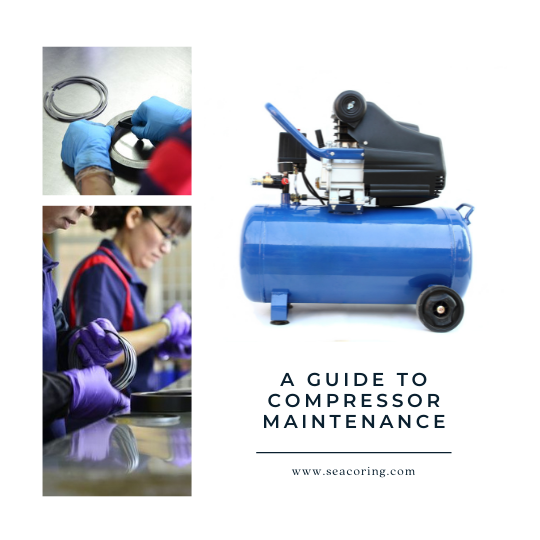NEWS
2022 / 05 / 30
A Guide to Compressor Maintenance

A Guide to Compressor Maintenance
Did you know that piston rings are one of the essential mechanisms in a compressor's development?The piston ring is worth its weight in gold among planes and other piston-driven machines. The role of the piston ring, quite simply, is to keep all the parts of the engine running smoothly, from pistons to cylinders.
If a piston ring malfunctions, it could lead to a severe health risk for any human nearby. Let's take a look at what makes a good compressor.
6 Most Important Maintaining Factors for Compressor
1. Know the Basic of Compressor
It is essential to know that compressor has two different types, and they are:(1). Air Compressor
This compressor uses air pressure to compress the piston ring against the cylinder wall. This type of compressor is straightforward to use, and its performance is also better than other types. It has a meager cost too.
But there are some limitations of this type of compressor, such as it cannot be used for high-performance engines because it cannot provide enough power to compress the piston rings properly.
(2). Hydraulic Compressor
This compressor uses hydraulic power instead of air pressure to compress the piston rings against the cylinder wall.
This compressor provides more power than an air-powered compressor, which helps compress the rings correctly, but its cost is also higher than an air-powered compressor.
2. Understand the Compression Ratio
The compression ratio is one of the most important numbers on your engine. It tells you how much pressure is in your cylinder when the piston is at its highest point, called Top Dead Center (TDC).The compression ratio is calculated by dividing the volume of air in the cylinder by its stroke volume. A higher compression ratio means more fuel and air can be packed into each cylinder, which means more power. But it also means that more heat energy is created during combustion, so you want to keep this number low enough so that your engine doesn't overheat.
3. Balance Your Pistons Before You Install It
Before installing your piston ring, the next thing you should do is balance your pistons. This means making sure that all four pistons weigh the exact amount and work together seamlessly when installed in the engine block.If one piston weighs more than another, it will throw off the weight balance of the entire engine block and could cause damage to other components inside it and slow down its performance overall.
Balancing these pistons should also be done regularly over time because as pistons wear down over time, they tend to lose weight, which means it's essential to keep checking their balance regularly. Hence, you know if any adjustments need to make.
4. Understand Ring Grooves
Piston rings are used to seal combustion pressure inside the cylinder walls during operation, preventing them from blowing out through the sides of the piston or leaking past valve stems into the crankcase.They also help transfer heat from combustion gases into coolant passages where it can be carried away by water jackets surrounding each cylinder bore. The top ring is an oil control ring, while the bottom two rings are called compression rings because they compress against cylinder walls during operation to seal combustion pressures within the bore.
5. Determine Your Compression Height
To check your compression height, start by removing the spark plugs from the cylinders one time. Then, place your thumb over the opening and turn the crankshaft until it stops.If there's resistance when turning the crankshaft, you have some compression in that cylinder, and the rings are still intact. If there's no resistance, all the oil has leaked out, and there's no compression in that cylinder.
6. Store Your Piston Ring Compressor Carefully
After using your compressor, it's essential to store it properly so that it doesn't get damaged or lose any of its functionality.The first thing you should do is unplug the motor when you're finished using it. This will keep it from accidentally turning on while you're storing it and possibly damaging itself. Next, make sure all valves are closed, and then let the unit cool down before putting it away.
You should never store your compressor while it's still hot because this can lead to severe damage or injuries if anyone touches it while it's hot enough to burn skin.
Summing Up!
To minimize the risk of a compressor breakdown, we suggest you follow the manufacturer's instructions for lubrication, inspect components regularly and replace any broken parts. By doing this, you can ensure your compressor is maintained in peak performance and avoid costly repairs.
Overall, compressor maintenance is essential to ensuring the continued smooth performance of your compressor. Put these maintenance practices into place; they'll do wonders for the longevity and reliability of your machine.
